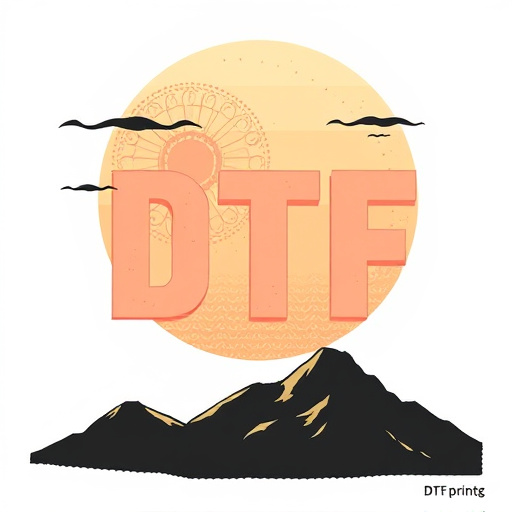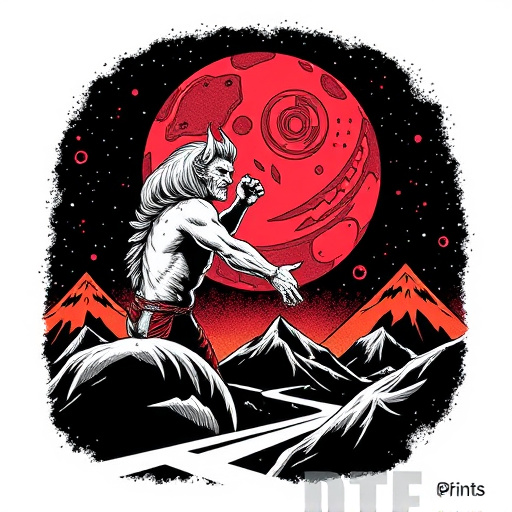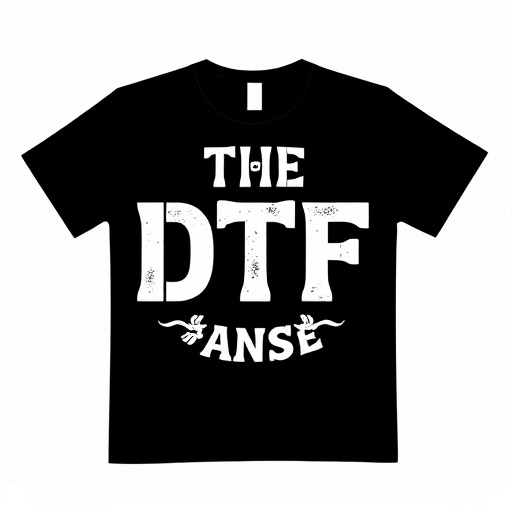DTF (Direct-to-Film) Prints offer a revolutionary solution for preserving film transfers, ensuring longevity and quality through advanced scanning and printing techniques that resist fading, scratching, and water damage. This technology directly bonds ink to film stock, creating an unbreakable protective layer ideal for archival use in various sectors like art, photography, and cinema preservation. Proper care is essential to maintain the vibrancy of DTF Prints over time.
Discover the future of film preservation with DTF (Direct-to-Film) prints, a revolutionary technology ensuring long-lasting, high-quality images. This cutting-edge approach overcomes the limitations of traditional film transfers, making it ideal for archival purposes. We explore the materials and technologies behind DTF prints, their enhanced durability, and how they offer unparalleled longevity for your cherished memories. Learn best practices for caring and maintaining these prints to safeguard your films against washing and wear.
- Understanding Traditional Film Transfers and Their Limitations
- The Rise of DTF (Direct-to-Film) Prints: A Revolutionary Approach
- Materials and Technologies Behind DTF Prints
- Enhancing Durability: Making Films Resistant to Washing and Wear
- Benefits of DTF Prints for Longevity and Preservation
- Best Practices for Caring and Maintaining Your DTF Prints
Understanding Traditional Film Transfers and Their Limitations

Traditional film transfers, a long-standing method of converting analog films to digital formats, have been the go-to for preserving cinematic memories. However, these processes often come with limitations that can affect the longevity and quality of the digital copy. DTF (Direct-to-Film) Prints, an innovative approach, aims to overcome these challenges.
One of the primary issues with standard transfers is their susceptibility to degradation over time, especially when exposed to regular handling and washing. The film grains can become blurred or even fade, leading to a loss of detail and color accuracy. In contrast, DTF technology employs advanced scanning techniques and specialized inks, ensuring that each frame captures the intricate details and vibrant hues of the original film, making it resistant to wear and wash-related damage.
The Rise of DTF (Direct-to-Film) Prints: A Revolutionary Approach

The rise of Direct-to-Film (DTF) prints has revolutionized the way we preserve and share our cherished memories. This innovative technology offers a long-lasting solution for film transfers, providing resistance to both washing and wear. Unlike traditional methods that can fade or deteriorate over time, DTF prints produce high-quality, durable replicas of your favorite films.
By eliminating the need for intermediate steps in the printing process, DTF ensures a direct connection between the original film and the final print. This not only enhances image clarity and color accuracy but also makes the prints more resilient. Whether you’re a filmmaker, photographer, or simply looking to preserve family heirlooms, DTF prints offer an unparalleled level of preservation and accessibility.
Materials and Technologies Behind DTF Prints

DTF Prints, short for Direct-to-Film, represent a cutting-edge technology in the realm of printing and film transfers. This innovative process involves transferring images directly onto a variety of materials using advanced inkjet printing techniques. The primary materials utilized include high-quality films, inks, and specialized coatings that work together to create long-lasting, durable prints resistant to washing and wear.
The precision and quality of DTF Prints are made possible by the latest inkjet printers designed specifically for this purpose. These printers deposit incredibly fine layers of ink onto the film surface, allowing for exceptional detail and color accuracy. Additionally, special coatings enhance the print’s resistance to fading, scratching, and water damage, ensuring that the transferred images remain vibrant and clear over extended periods. This technology has revolutionized various industries, from art and photography to signage and marketing, by offering a versatile and cost-effective solution for creating long-lasting film transfers.
Enhancing Durability: Making Films Resistant to Washing and Wear

In the pursuit of preserving cinematic art, enhancing film durability is paramount. Traditional film transfers often succumb to the rigors of washing and everyday wear and tear, leading to fading, cracking, or even complete loss of imagery. However, advancements in technology have introduced DTF (Direct-to-Film) Prints as a groundbreaking solution. This innovative process involves transferring images directly onto film stock, creating a robust bond that resists the effects of moisture, handling, and environmental factors.
DTF Prints offer an unparalleled level of resilience, ensuring that films remain intact and vibrant for extended periods. The direct application of ink onto the film’s surface creates a protective layer that shields against discoloration and degradation caused by water or exposure to harsh conditions. This method revolutionizes film preservation, making archival-quality transfers accessible while guaranteeing longevity in both personal collections and institutional archives.
Benefits of DTF Prints for Longevity and Preservation

DTF (Direct-to-Film) prints offer a revolutionary approach to preserving precious memories and artifacts, ensuring their longevity for future generations. This advanced technique provides several key advantages in terms of durability and resistance to deterioration. Unlike traditional printing methods, DTF directly applies ink to the film surface, creating a seamless bond that prevents ink from fading or flaking over time. The result is an incredibly durable print that can withstand exposure to light, moisture, and everyday handling without sacrificing quality.
Furthermore, DTF prints are highly resistant to washing and wear, making them ideal for archival purposes. The direct adhesion of the ink ensures that images remain vibrant and intact, even when subjected to various environmental conditions or regular use. This durability is especially beneficial for precious documents, photographs, maps, and artwork, guaranteeing their preservation and accessibility for years to come.
Best Practices for Caring and Maintaining Your DTF Prints

To ensure your DTF Prints remain vibrant and lasting, proper care and maintenance are essential. Start by storing them in a cool, dry place away from direct sunlight and heat sources, as both can fade the colors over time. Avoid handling the prints unnecessarily to prevent any physical damage or smudging of the delicate ink. When cleaning, use a soft, lint-free cloth slightly dampened with distilled water to gently wipe away any dust or fingerprints. Avoid using harsh chemicals, abrasive materials, or immersion in water as these can damage the print.
Regular inspection is also crucial. Check for any signs of wear, tears, or smudges and address them promptly. For stubborn marks, a slightly damp cloth or a specialized ink remover designed for DTF Prints can be effective. Remember, gentle handling, proper storage, and regular cleaning will help maintain the integrity and vibrancy of your DTF Prints for years to come.














